|
PART 1
|
|
|
|
|
|
Ebanezer (Eban) Townsend Starr of Yonkers, New York patented and manufactured
3 types of percussion revolvers that were purchased by the United
States Government starting in 1861 and ending in 1864. 6,352 Starr
DA Navy and Army revolvers were purchased on the open market and 41,102,
including the SA Army, were purchased under contract for a total of
47,454 guns. Starr revolvers were the third highest in number to be
purchased by the Union government. All three of these models are pictured
below.
|
|

|
|
|
Starr
Model 1863 Single Action .44 Caliber Percussion Army Revolver
(1863-1864
|
|
|
|
|
|
The first of these revolvers was the Model 1858 Double Action .36
caliber Percussion Navy Revolver. Starr produced, at his Binghamton,
New York factory, 3,000 of this model between 1859 and 1860. 100 were
ordered by the Navy Department in October, 1861, but were rejected
and returned to Starr. However, the Ordnance Department purchased
1,402 before January of 1862, 1,000 of which were delivered in 1861.
It is generally believed that a total of 2,250 Starr Navy revolvers
were purchased by the federal government or directly by various military
departments. All are believed to have been open market purchases.
|
|
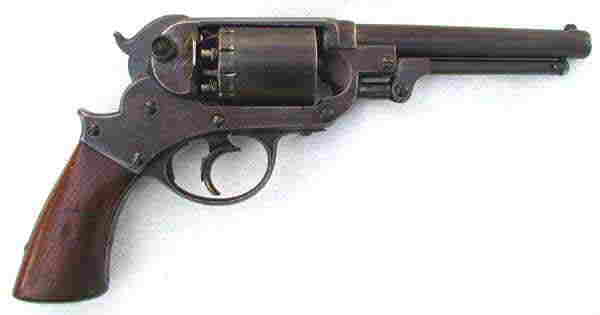
|
|
|
|
|
|
All of the Starr DA revolvers were rugged and successful handguns.
They are considered to be one of the most "modern" revolvers of the
Civil War era with their construction reflecting the ideas and work
of a very gifted inventor. The rejection by the Navy and the somewhat
limited purchases of this pre-war revolver led Starr to the production
of the larger .44 caliber Army revolvers which were to enjoy greater
acceptance with the U.S. military. Those models will be pictured and
discussed in Parts Two and Three of this posting series.
|
|
|
|
|
|
The double action Starr revolver has been described as a hybrid between
a double and single action gun. It is actually a "self cocker" as
the large front "trigger" only cocks the hammer and rotates the cylinder.
There is an adjustable curved spring lug, screw-held to the rear of
the cocking lever that engages the small "real" trigger at the inside
rear of the guard that actually releases the hammer to strike the
percussion cap to fire the gun. When properly adjusted a long smooth
pull of the front trigger or cocking lever will push into and activate
the real trigger behind it. The rear trigger can be seen in the following
photograph.
|
|
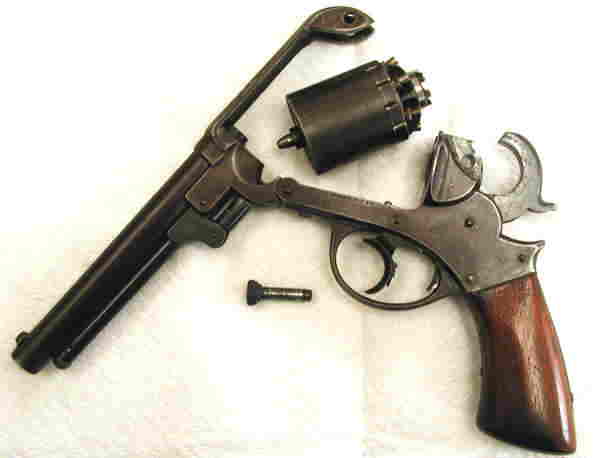
|
|
|
|
|
|
The blued hinged barrel is 6 inches long. It does not have any markings.
It is rifled with 6 grooves. The mortised iron front sight is positioned
3/16" from the muzzle. The "V" notch in the hammer lip serves as the
rear sight. The loading lever is cased hardened and is secured by
a spring actuated plunger. The rounded lever catch is 7/16" from the
muzzle. The two-piece blued frame is held together by a round knurled
thumb screw which enters from the right side behind the recoil shield
and hammer. The frame is stamped on the outside beneath the cylinder
on both sides. There is also a solitary "A" stamped inside the frame
under the cylinder.
|
|

|
|
|
"STARR'S PATENT JAN. 15, 1856."
|
|

|
|
|
" STARR. ARMS. Co. NEW.YORK."
|
|

|
|
|
|
|
|
|
|
|
There is a heavily beveled large semi-circular loading groove above
the hinge screw at the lower front of the rounded frame and a small
capping cutout at the lower edge of the narrow recoil shield on the
right side of the revolver. The separate, blued back strap is held
to the frame by the rearmost frame screw, while the front strap is
integral with the large oval trigger guard. The very short hammer
spur is case-hardened. The one-piece walnut grips are normally oil-finished.
However, on the arm pictured they are varnished. The grip is rounded
at the bottom and is without a butt strap. The weapon measures 13"
overall and weighs 3 pounds, 3 ounces. A primary identification feature
is the outward slanting nipples at the rear of the cylinder.
|
|
 |
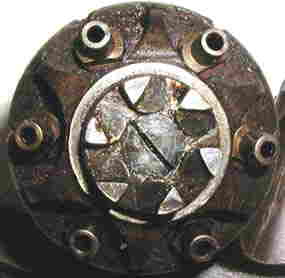 |
| Side
View of Slanting Nipples
|
Rear
View Of Cylinder
|
|
|
|
|
The 2¼" inch, six-shot, .36 caliber blued cylinder is marked
only with a serial number. The oval stop slots are supplemented by
intermediate safety slots.
|
|
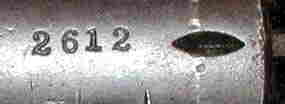 |
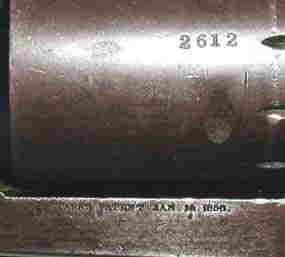 |
| Close
Up of Serial Number "2612" and Oval Stop Slot
|
Serial
Number "2612" on Cylinder and Left Frame Marking
|
|
|
|
|
The serial number will also be seen at the front bottom of the frame,
on the inside rear of the hammer shank, and on the hammer rest. Additionally,
it is stamped on the bottom of the barrel at the forward most frame
screw. The latter stamping is difficult to see and has not been photographed.
Normally, only the first digit or two can be seen without taking the
arm apart.
|
|
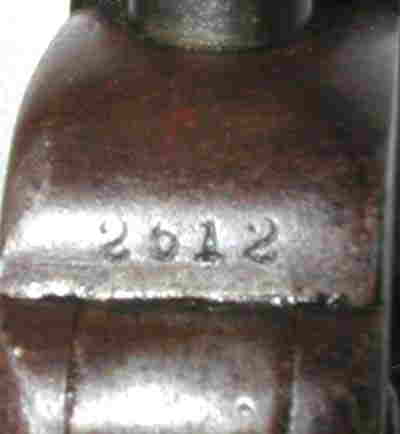
|
|
|
|
|
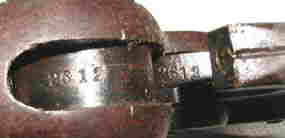 |
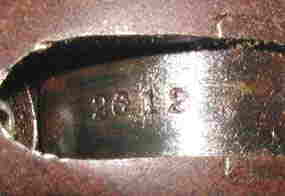 |
| Serial
Number Stamping Hammer Shank And Hammer Rest
|
Close
Up of Hammer Rest Stamping
|
|
|
|
|
The Starr Navy Model is the most difficult Starr revolver to find
as it had a rather limited production when compared to the Army types.
It should be noted that these revolvers are seldom found with inspector
stampings. However, some martially marked specimens have been found
with the stamping "JT" on the wood grips.
|
|
|
The next posting, "3 STARS FOR STARR - PART 2 ", will feature the
Starr Model 1858 Double Action .44 Caliber Percussion Army Revolver.
The Starr Model 1863 Single Action .44 Caliber Percussion Army Revolver
will be featured in "3 STARS FOR STARR - PART 3".
|
|
|
Once again, a substantial amount of reference material and wording
came from Robert M. Reilly and his book "U.S. SMALL ARMS 1816 - 1865",
William B. Edwards great book, "CIVIL WAR GUNS" and, as always, from
the great Norm Flayderman's FLAYDERMAN'S GUIDE(S) TO ANTIQUE AMERICAN
FIREARMS.... AND THEIR VALUES." Information was also gleaned from
an American Rifleman reprint by the NRA - "CIVIL WAR SMALL ARMS".
|
|
|
My webmaster and son, Reed Radcliffe, once again provided the technical
expertise to process these words and pictures to my web page as well
as taking the time to upgrade my computer and provide maintenance
services as needed.
|
|
| Dave
Radcliffe
|
|